After four years of use, our ‘Fan-Tastic’ roof vent fan (good brand name… get it? 😊) was getting a little tired. The plastic was yellowing and over our time in South America, we had noticed a key limitation of its design: it can’t be used in the rain. By the time we reached the tropical rainy season in Panama in 2018, we decided to do something about the ‘rain problem‘. Then four years later in North America, we realised the roof vent fan would be a good way to filter hideous smokey air from forest fires. Read on for how we did this…
The Rain Problem
When we chose Cuthbert in Europe back in 2012, he had the ideal set-up for all climates: (i) excellent insulation for when it’s hot or cold; (ii) windows and a large roof-hatch for ventilation on warm days/nights; and (iii) a Fan-Tastic roof vent fan to keep fresh air moving around inside the truck in the heat.
For the first few years, all these features ensured we had a good night’s sleep. But what we hadn’t considered is a climate that is both hot and wet. In north Brazil entering the Amazon rainy season in 2017, we realised for the first time that we lacked the ability to properly ventilate Cuthbert during tropical heavy rains. The Fan-Tastic has a sensor which automatically shuts-off the fan and closes the lid on the roof vent fan when it senses water.
Normally that would be a good thing… you wouldn’t want rain coming into the rig would you? But the problem, is we can’t open either of the roof vents when it is raining (well… we could… but we’d get very wet 😊). With temperatures over 40C and humidity around 95%, living in the unventilated cabin is stifling. So when we reached Panama in 2018, we decided to replace the Fan-Tastic with a MaxxAir vent. Although this lacks the snappy brand name of the Fan-Tastic, it does have the significant advantage of a rain hood, which allows it to keep running when it’s chucking-down cats and dogs.
Installing the MaxxAir Roof Vent Fan
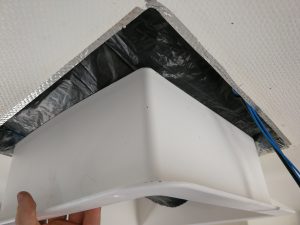
Both Fan-Tastic and the MaxxAir models are designed to be installed in a “standard 14 inch” (355 mm) roof hole. Problem was… the roof hole in our truck roof was actually 15 ¾ inches (400 mm). The old vent was indeed the ‘standard 14 inch’, but it had been fitted with a large upper rim spreading over the gap between the vent and the larger roof hole. The new MaxxAir vent design doesn’t have this upper rim, so it wouldn’t sit in the hole without a bit of extra work. I needed to make the roof hole smaller, but retain the necessary strength and water-proof sealing
Here’s how I did it: I removed the old Fan-Tastic but kept just the lower half of its plastic support frame. I wrapped this lower half in a plastic bag and re-installed it in the hole (secured in the hole with the original screws underneath in the inside of the truck). This left the void between the frame and the roof, open from above.
From above, I then used expanding foam to fill the void between the frame and roof, creating a smaller hole. The foam provides insulation rather than having a large air gap, but it is obviously not structurally strong.
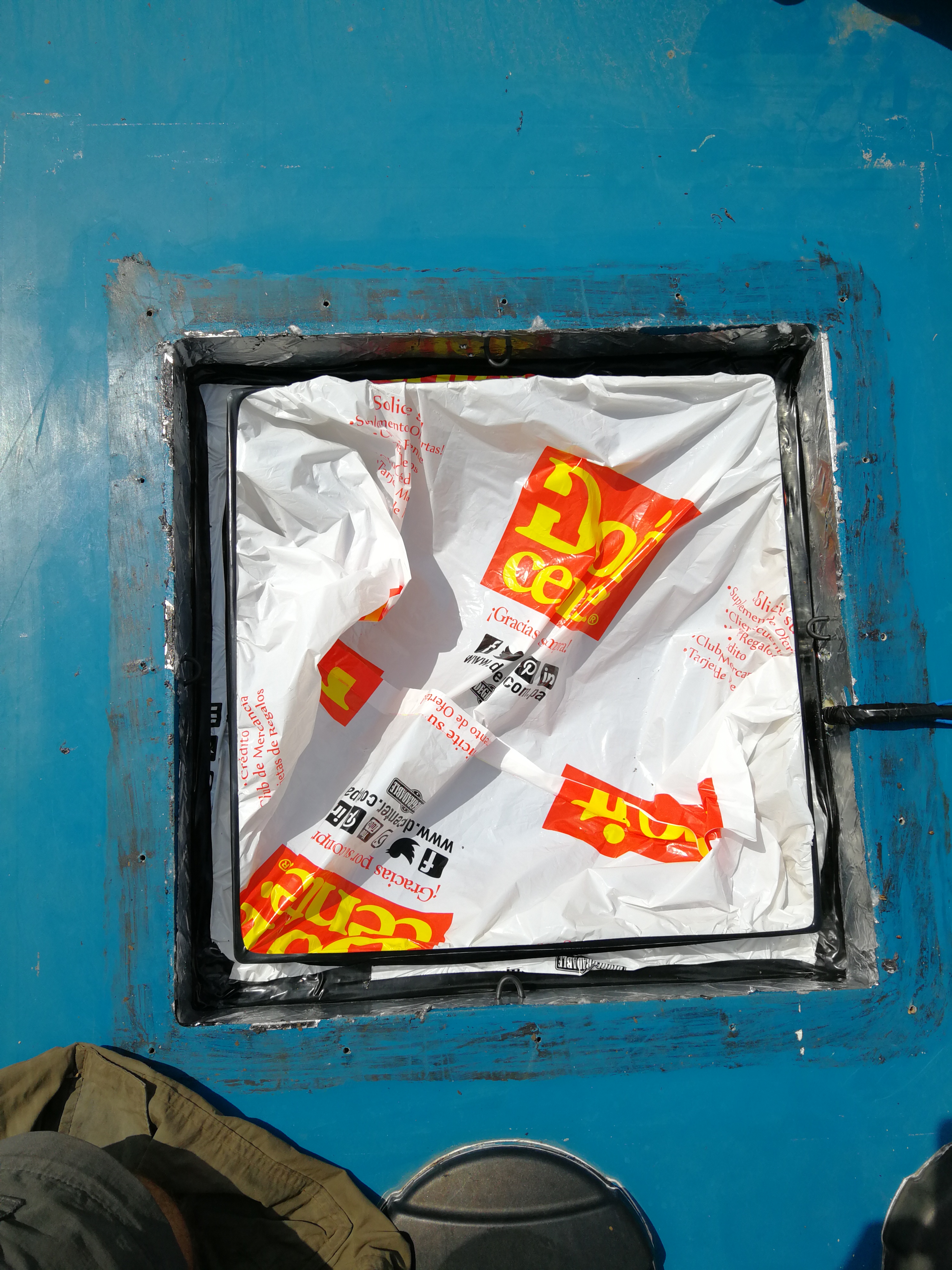

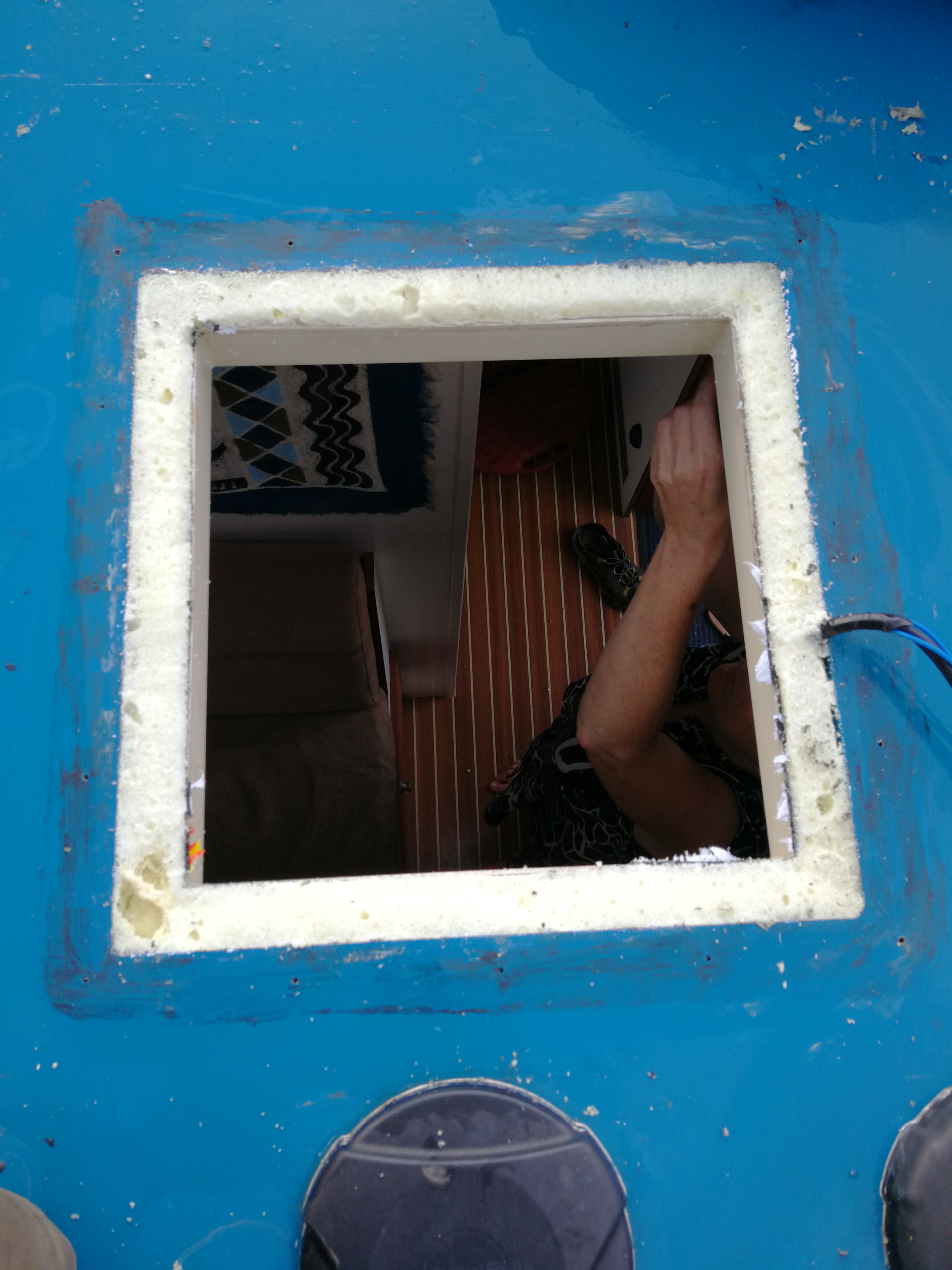
The new vent still needed to be supported by a stronger plate sitting over the gap above the foam, so I cut an aluminium plate to fit on the roof over the foam, securing it to the roof with the old vent mounting holes.
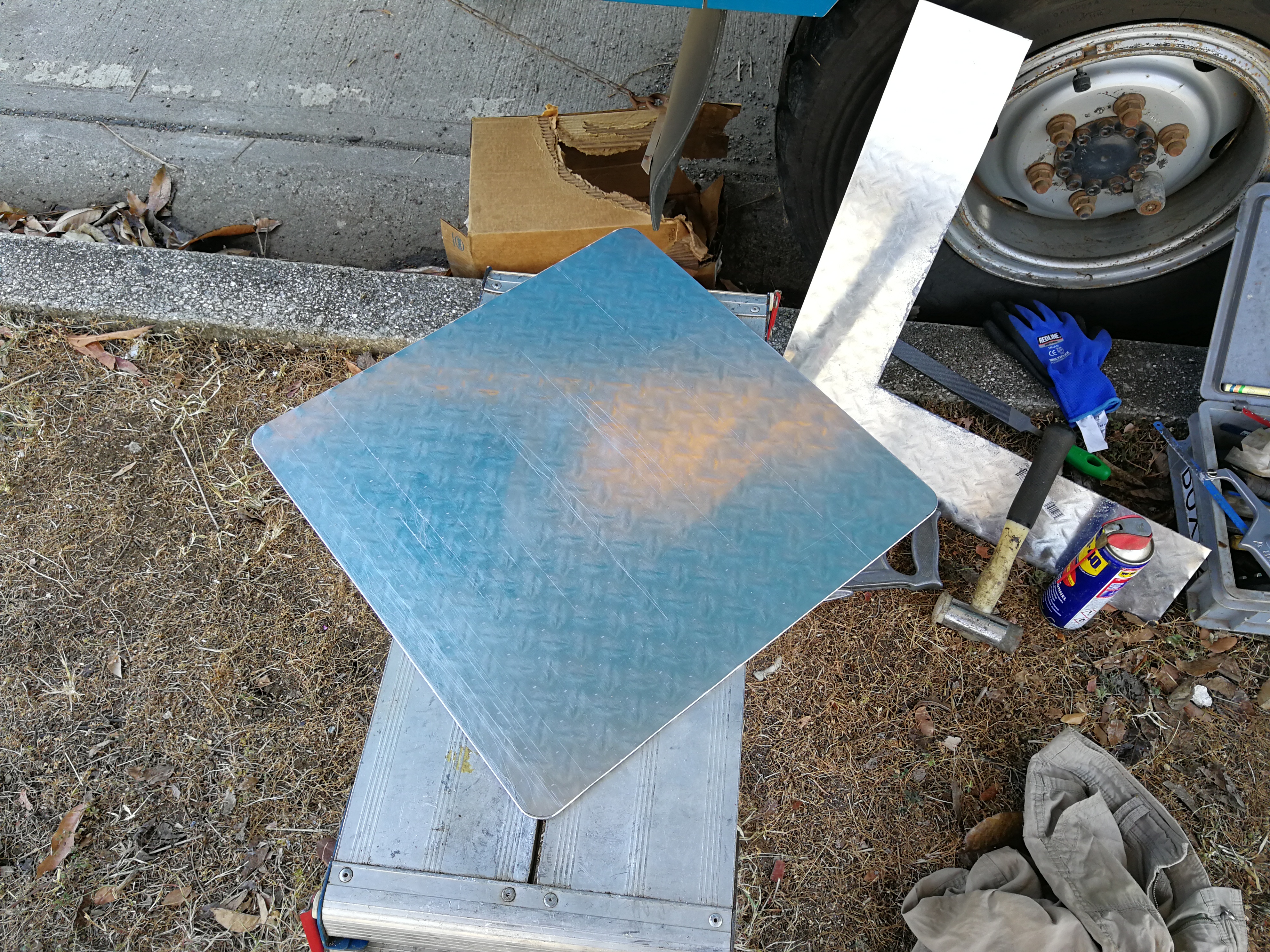
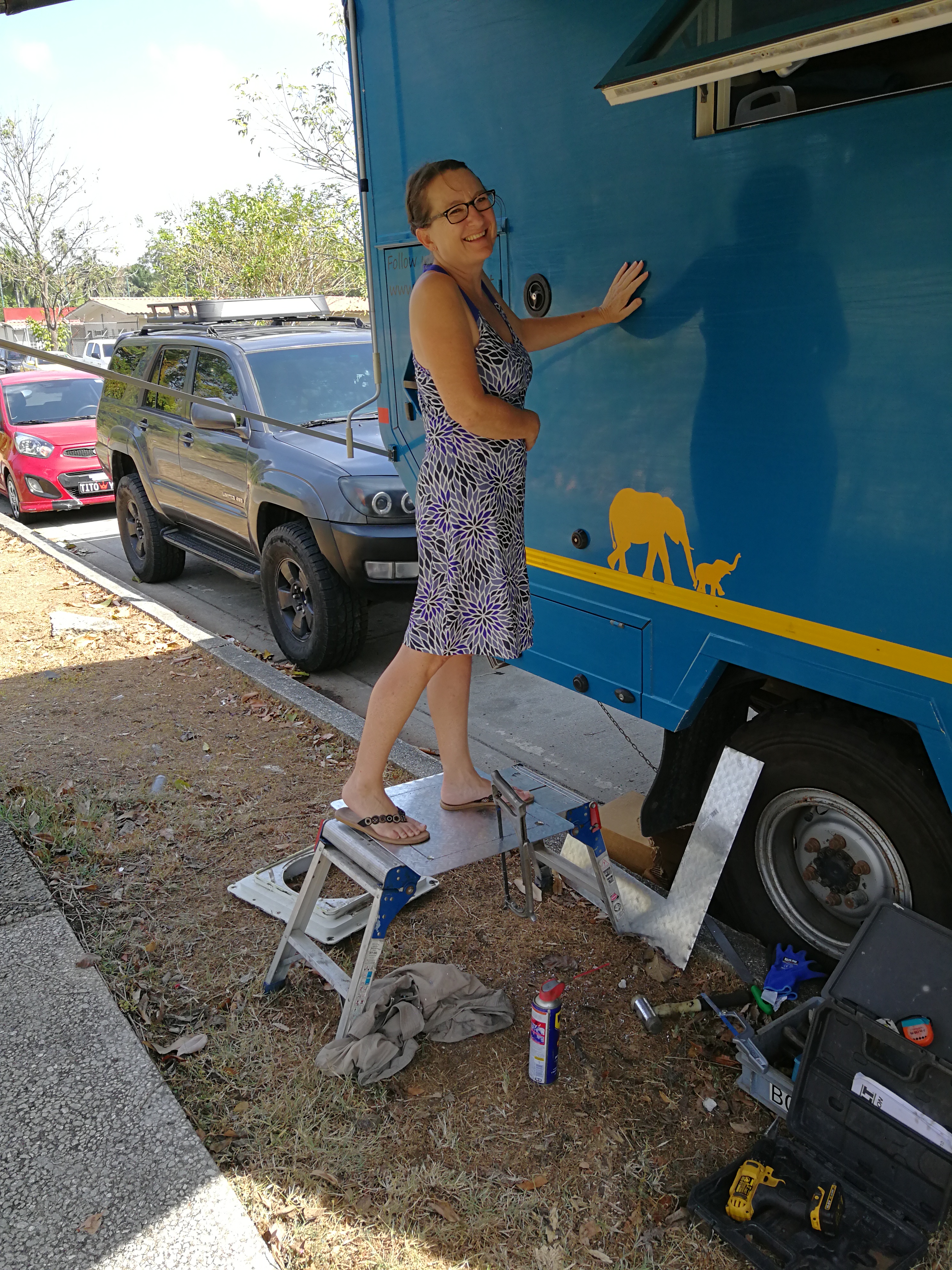
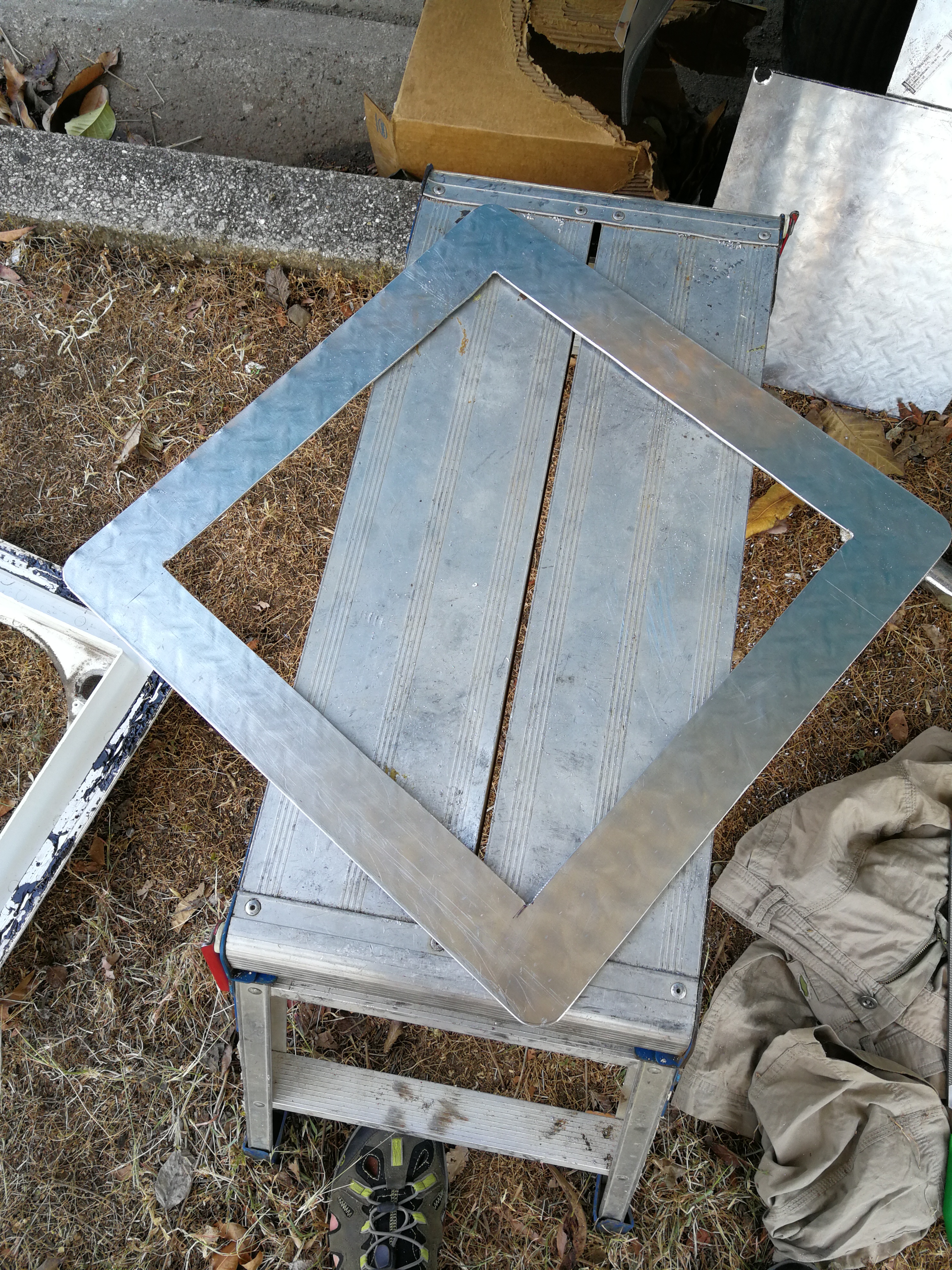
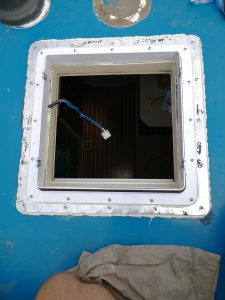
To water-proof seal it, I wanted to use Sikalastomer 710 butyl sealant (as used for the original Fan-Tastic). This is a high quality non-setting sealant used for joints in caravans and motorhomes but I couldn’t find any in Panama. We contacted the local Sika agent who very kindly let us have a tube of Sikalastomer 511. This is a very similar butyl sealant, but a more industrial version. The advantage of using a butyl sealant over a more ‘standard’ domestic silicone sealant, is that it never really sets. This makes it more resilient in high vibration environments and can easily be disassembled later.
With the plate fitted on the roof reducing the size of the hole, I could then fit the new vent. Now we can have the vent fan running rain or shine 😊
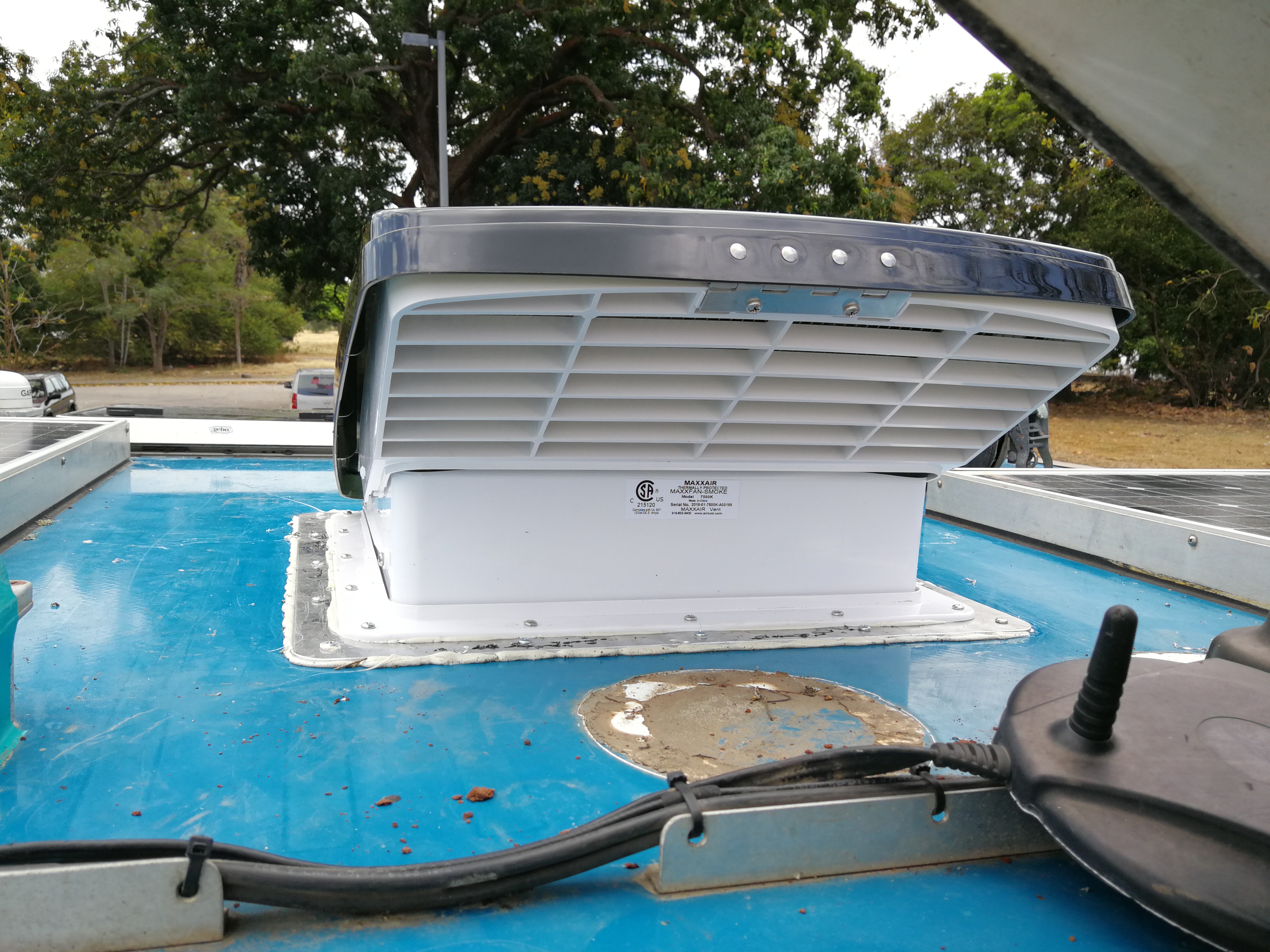
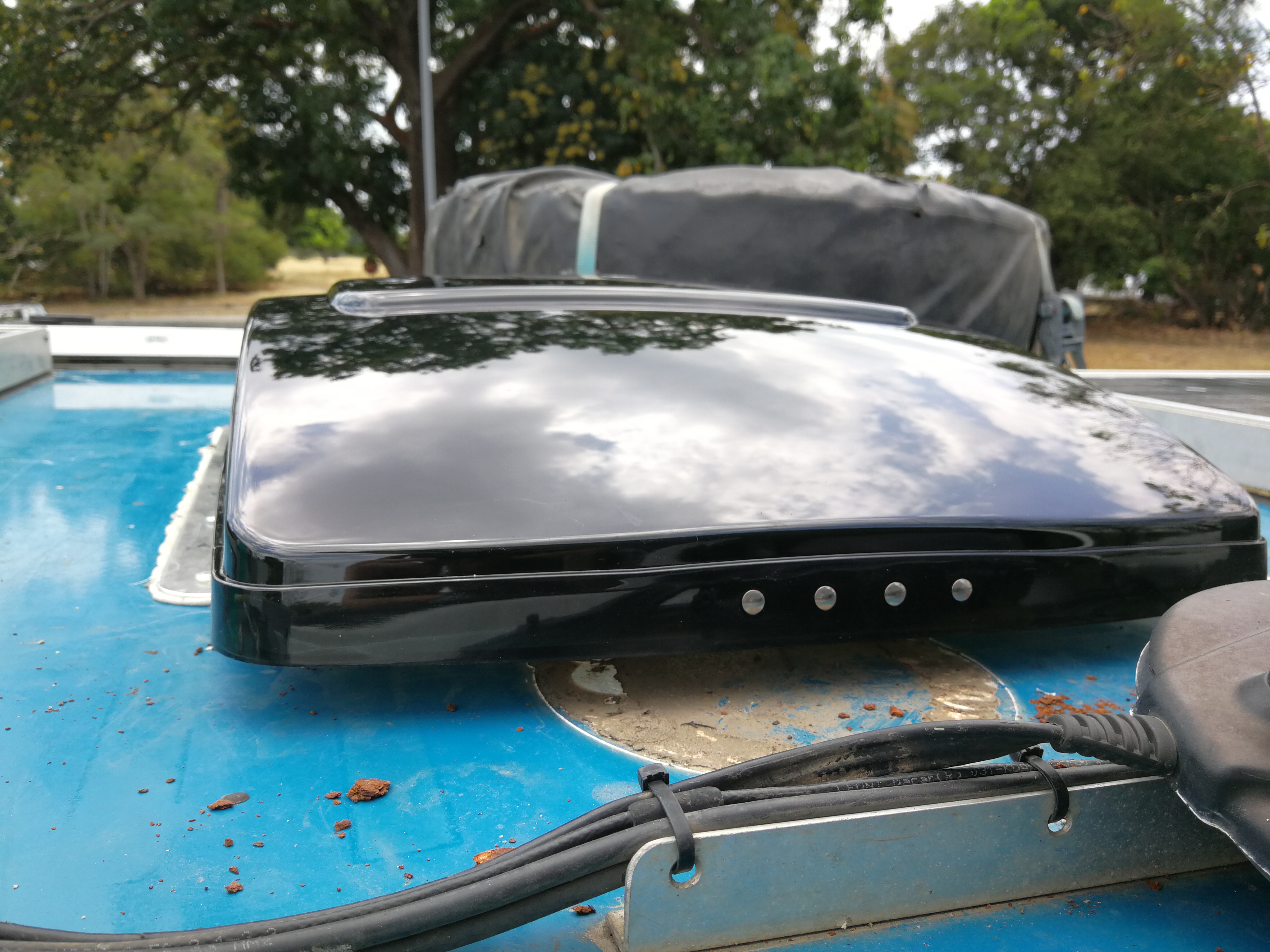
Ventilation with Smoke Outside
Some years later in 2022, we are still happy with the MaxxAir and have even found a way to adapt it as an air filter!
We have spent three summers in USA/Canada and each year have suffered at the hands of extreme smoke from forest fires. The official advice when the air quality reaches a designation of ‘unhealthy’ or ‘harmful’ is to stay indoors with windows and doors closed.
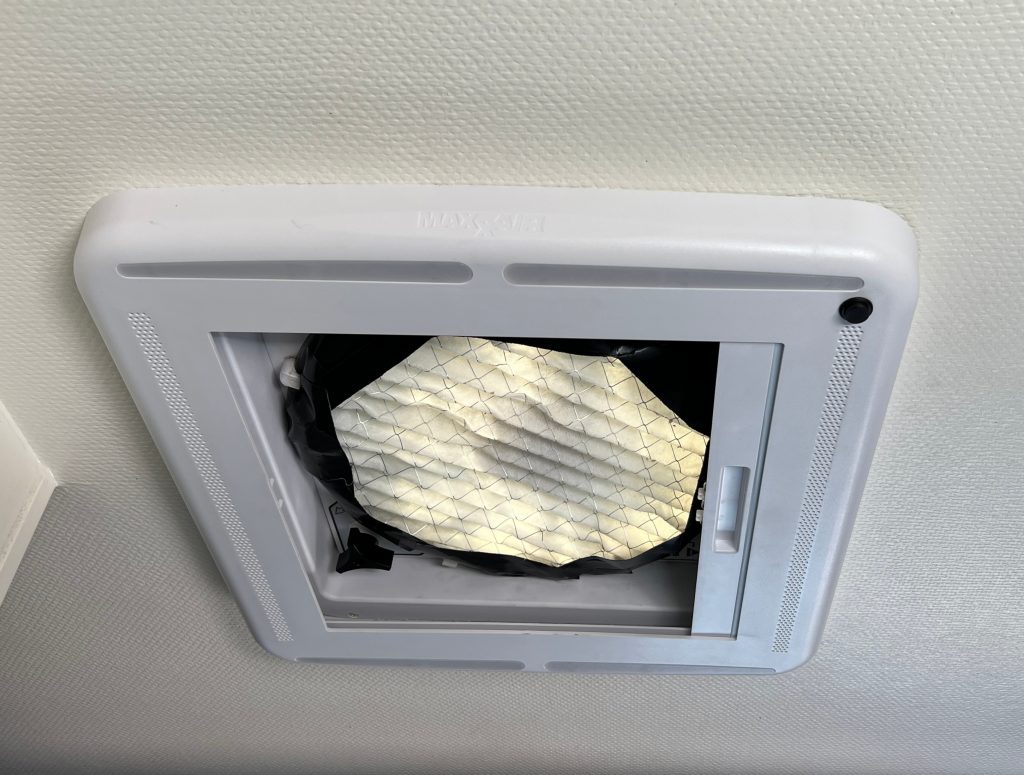
That’s all well and good if you live in a house. But when you live in a camper-truck it’s too small to do that. After a short time, it’s not possible to breathe without circulation of air from outside. And the air from outside is so bad it stings the back of your nose and throat. It’s bad enough in the daytime when we can at least spend some time in shops/malls/cinemas and so on. But at night we spend 8-10 hours breathing in harmful substances.
Our solution was to buy an ordinary domestic HVAC filter (rated MERV 11) for $10 in Walmart, and cut it down to the size of our MaxxAir roof vent fan. We bodge-taped it over the roof vent fan so that all the incoming air is filtered. Result: not a pretty look, but clean healthy air to sleep in!
Hey… was this useful? If so, you might like to support our website costs with a donation below. Thanks 😊👍
